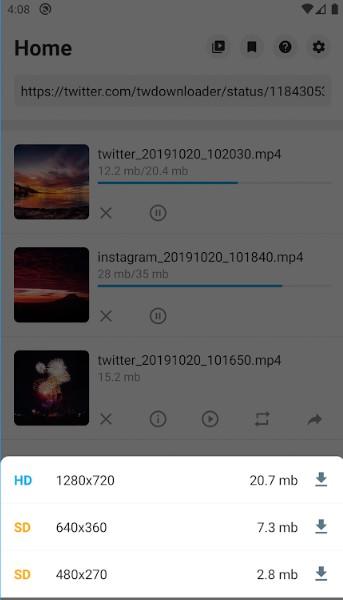In a campaign season defined by speed and spectacle, political arguments are being cut, captioned and streamed straight into voters’ feeds-often on X, the platform formerly known as Twitter. By leaning into long-form video, live broadcasts and creator-style monetization, X is positioning itself as a kind of anchorless network, letting candidates bypass traditional media and test messages in real time.
The shift is altering who sets the agenda and how quickly narratives harden. High-profile interviews, counter-programming during televised debates and rapid-fire clip wars now unfold on a platform where algorithmic reach favors engagement and virality. Supporters tout direct access and on-the-spot fact-checks via Community Notes; critics warn of selective editing, opaque metrics and looser moderation. This article examines how X’s video turn is recasting the mechanics of political debate-and what that means for campaigns, journalists and the voters caught in the scroll.
Table of Contents
- X video is redefining political debate as short clips outrun televised sound bites
- Inside the dynamics algorithmic boosts creator gatekeeping and the erosion of shared facts
- How campaigns and newsrooms should adapt add context cards link primary sources deploy rapid fact checks and budget for creator partnerships
- Concluding Remarks
X video is redefining political debate as short clips outrun televised sound bites
Short-form video on X is compressing campaign messaging into seconds and shifting agenda-setting from newsrooms to feeds, with candidates, influencers, and partisan publishers posting vertical, captioned snippets that outpace scheduled broadcasts; policy arguments now break in creator timelines, anchors trend as excerpts rather than hosts, and verification competes with velocity as Community Notes and forensic analysts chase virality in near real time.
- Distribution: Algorithmic feeds and repost chains outstrip appointment viewing, pushing narratives across audiences in minutes.
- Production: Vertical framing, on-screen text, and jump cuts optimize for silent autoplay and thumb-stopping hooks.
- Gatekeeping: Direct-to-camera posts bypass traditional interviews, with clips from rallies and Spaces replacing formal press hits.
- Verification: Frame-by-frame debunks, watermark checks, and platform labels surface under videos but often trail initial reach.
- Metrics: Watch time, completion rate, and repost velocity become the new “ratings,” guiding campaign and newsroom packaging.
- Risks: Context collapse, selective edits, and synthetic audio; countered by provenance tags, raw-footage releases, and standardized clip packs.
Inside the dynamics algorithmic boosts creator gatekeeping and the erosion of shared facts
On X, the video-first feed has shifted editorial power from newsrooms to high-follower accounts, with recommendation signals privileging speed, retention, and re-shareability over breadth of evidence; monetization tied to engagement nudges creators to publish clipped, emotive moments from hearings, town halls, and livestreams, while labels and crowd-sourced context tools arrive later-if at all-allowing competing edits of the same event to trend simultaneously and leaving audiences to adjudicate reality via creator reputation, verification badges, and the momentum of the “For You” tab.
- Incentive design: Revenue share, brand deals, and payout thresholds favor sensational cuts that maximize watch time and reply velocity.
- Distribution levers: Completion rate, rewatches, and quote-post chains act as multipliers, often outrunning newsroom fact checks.
- Context mechanisms: Community Notes and link-outs add friction after the spike, frequently trailing the narrative set by the first viral clip.
- Creator control: Selective framing-captioning, jump-cuts, on-screen text-functions as soft editing that shapes interpretation without disclosure.
- Audience behavior: Partisan communities swarm early, creating feedback loops where visibility is conflated with veracity and dissent is downranked by engagement norms.
How campaigns and newsrooms should adapt add context cards link primary sources deploy rapid fact checks and budget for creator partnerships
As short clips drive agenda-setting on X, both campaigns and newsrooms are retooling their pipelines to inoculate audiences against misframes, verify claims at the speed of the feed, and extend reach through trusted messengers while maintaining rigorous transparency.
- Add context cards in real time: prewrite “clip notes” with who/what/when/where, pin them via threaded replies, deploy on-video lower-thirds and captions, and coordinate with Community Notes contributors to surface citations and counteract selective edits.
- Link primary sources: attach full transcripts, raw livestreams, FEC filings, court documents, and datasets using UTM-tagged permalinks and WebArchive/Perma.cc mirrors to preserve access if originals are deleted or edited.
- Deploy rapid fact checks: stand up 24/7 verification desks, prebunk predictable narratives, publish time-stamped receipts (documents, call logs, FOIAs) within minutes, and circulate updates through quote-posts, duets, and cards that follow the viral clip into new audiences.
- Budget for creator partnerships: earmark funds for briefings, explainers, and stitch-friendly assets; prioritize localized micro-creators with high trust; require clear labeling and independence; and measure impact with view-through, lift, and save/share rates-not impressions alone.
- Standardize governance: codify legal review for election rules and defamation risk, mandate AI/alteration disclosures, maintain incident playbooks for manipulated media, and publish corrections logs to protect credibility.
Concluding Remarks
As campaigns recalibrate for a feed-first electorate, Twitter/X’s video tools have become both megaphone and message, collapsing stump speech, press gaggle and ad buy into a single clip. Supporters argue the format widens access and speeds accountability; critics warn it accelerates spectacle, shortens attention and blurs lines between reporting, persuasion and performance.
With new monetization schemes, shifting policies and an algorithm built for velocity, the incentives now shape the rhetoric as much as the rhetoric shapes the race. Regulators are watching, newsrooms are adapting, and operatives are testing what travels in vertical video.
The next contest will unfold as much in real time as in prime time. Whether this rewiring of political communication broadens participation or deepens fragmentation, one thing is clear: the battleground is no longer a stage but a scroll.


